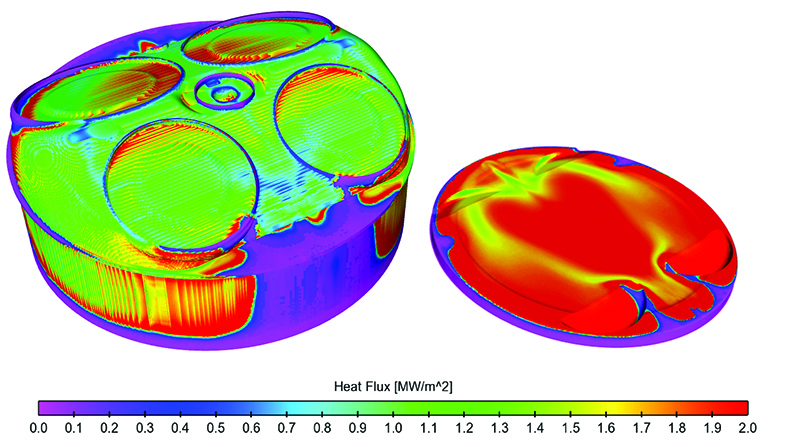More than 140 years ago, when the first four-stroke cycle, internal combustion engine was invented, it became the prototype for the modern automobile powertrains. As long as those engines have existed, however, “knock” has been a limiting factor to the performance of engines.
With the help of the Ohio Supercomputer Center, Ahmet Selamet, Ph.D., is tackling that problem head on.
“The ultimate goal is improving fuel efficiency,” said Selamet, a professor in the Mechanical and Aerospace Engineering Department at The Ohio State University. “OSC is a tremendous enabler to develop realistic models for the very complex physics we are dealing with. If it weren’t that complex, we would have had the answer in 140 years.”
Selamet simulates the chemical kinetics and unsteady fluid motion and heat transfer within an engine’s combustion chamber to learn ways to suppress engine knock, which could lead to much improved fuel efficiency.
The term “knock” refers to the sound you hear—literally, a knock or a ping—from inside your engine. This is due to an abnormal combustion process in which “end gas” ahead of propagating flame within the combustion chamber gets auto-ignited. The resulting high amplitude pressure fluctuations cause stress on the engine.
“We try to predict conditions that will lead to knock,” Selamet said. “We hear it as a noise because the engine is subject to tremendous oscillating pressure forces. It’s highly undesirable for the structural integrity and longevity of the engine and deteriorates performance.”
Understanding time-resolved heat transfer—which dictates the temperature of end gas and its susceptibility to auto-ignition through reaction rates within the combustion chamber—is critical. Therefore, Selamet is developing a detailed heat-transfer model based on physics and computational fluid dynamics to help fine tune a simplified model. That model can be used by manufacturers to design more efficient engines.
In North America each year, close to 20 million engines are produced just for passenger cars and trucks.
Selamet combines three-dimensional CFD using CONVERGE software on OSC’s Oakley Cluster with physical experiments at Ohio State’s Center for Automotive Research.
“OSC gives us superior ability to run CFD in a meaningful fashion,” Selamet said. “While CFD is a powerful tool, you still need experiments to fine-tune the modeling. Having both capabilities gives me the entire picture and presents a tremendous opportunity to make a true impact.”
###
Written by Ross Bishoff
Project Lead: Ahmet Selamet, Ph.D., The Ohio State University
Research Title: Simulation of in-cylinder chemical kinetics and unsteady heat transfer for suppression of engine knock and improved fuel efficiency
Funding Source: Chrysler, The Ohio State University
Website: http://engine.osu.edu

